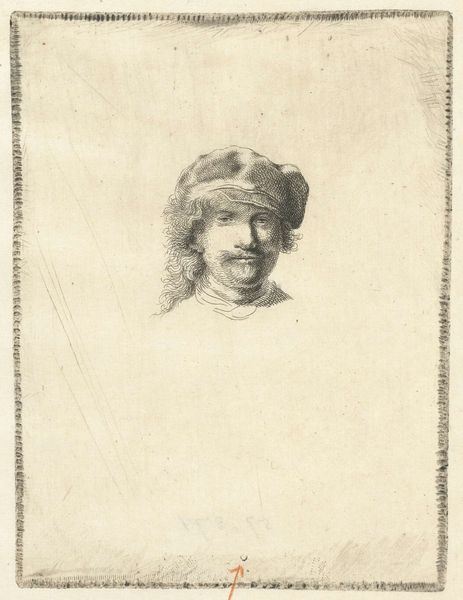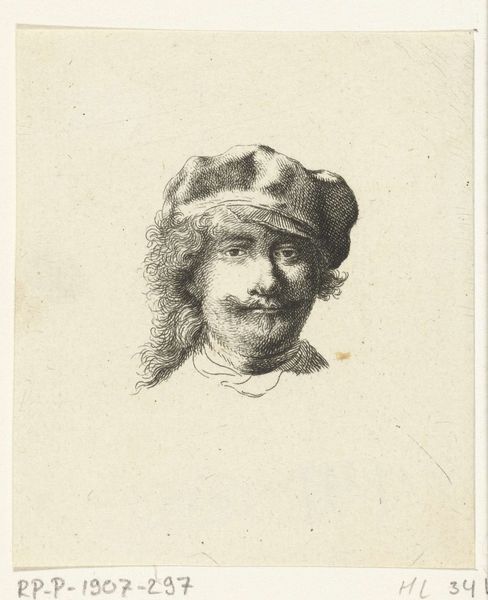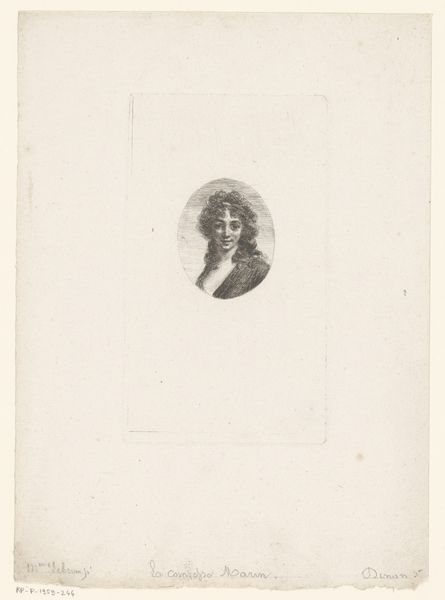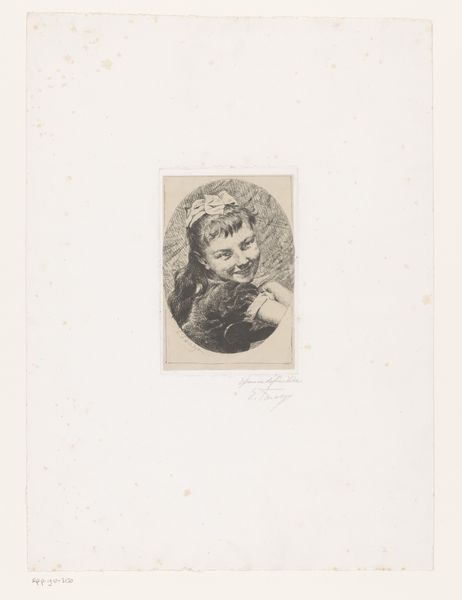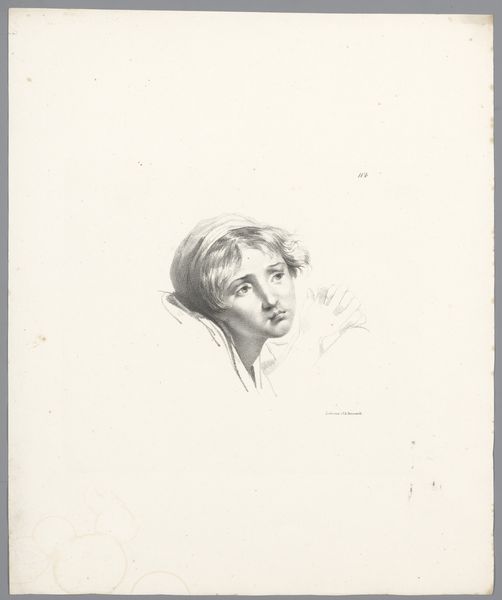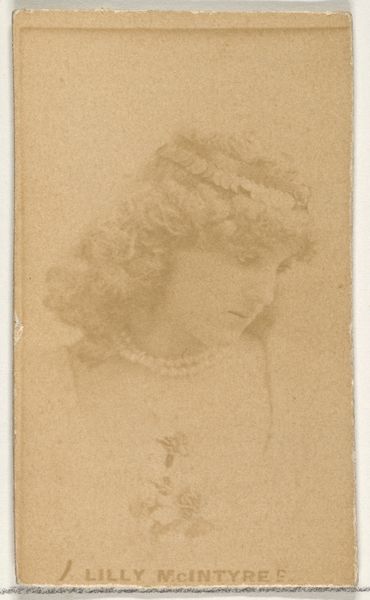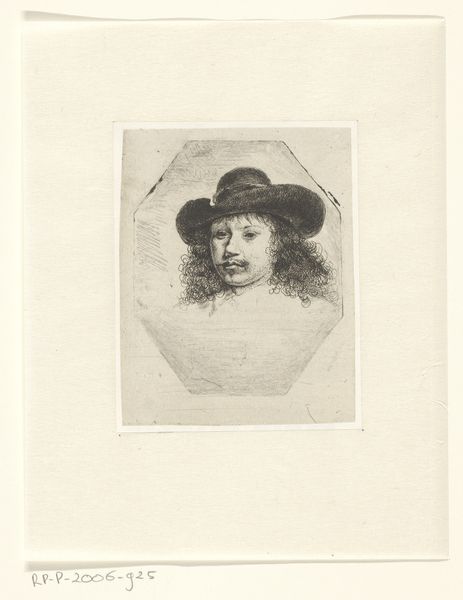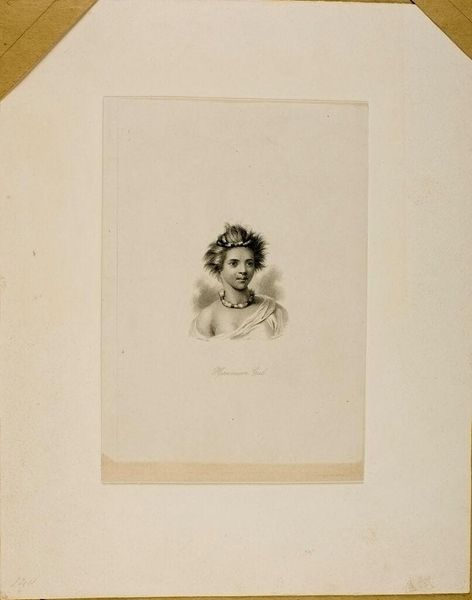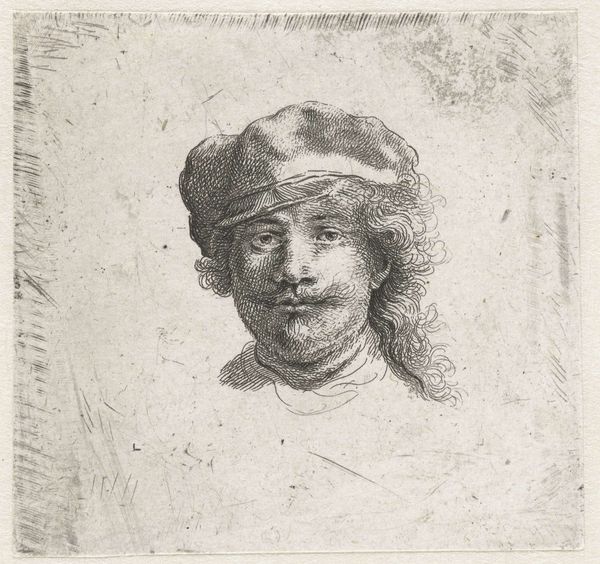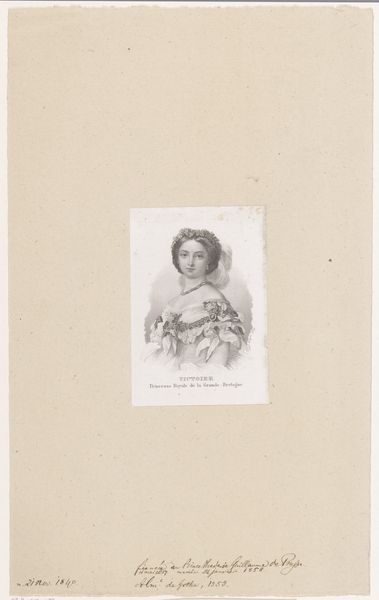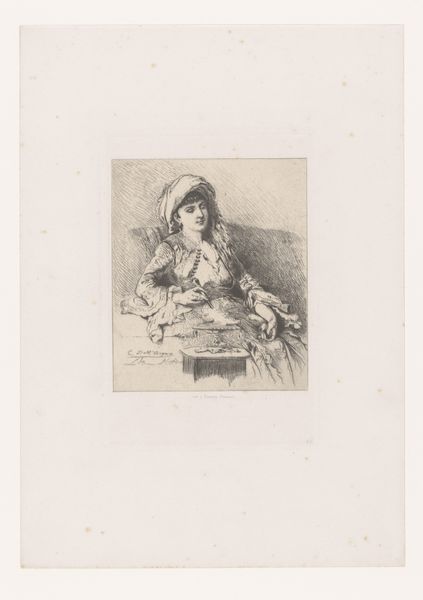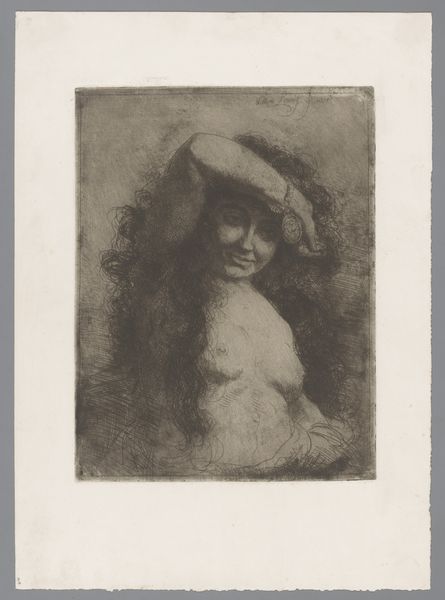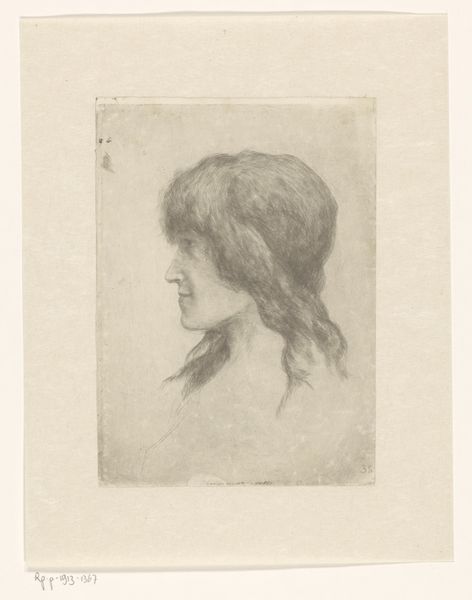
Self-portrait wearing a soft cap: full face, head only 1805 - 1844
0:00
0:00
ignacejosephdeclaussin
Rijksmuseum
drawing, dry-media, graphite
#
portrait
#
drawing
#
self-portrait
#
dry-media
#
romanticism
#
graphite
Dimensions: height 145 mm, width 109 mm
Copyright: Rijks Museum: Open Domain
This is a self-portrait by Ignace-Joseph de Claussin, made using etching, a printmaking technique, sometime in the first half of the 19th century. To make an etching, the artist coats a metal plate with a waxy, acid-resistant substance, then draws into it with a sharp needle. When the plate is immersed in acid, this etches away the exposed lines. The plate is then inked, and the surface wiped clean so that the ink remains only in the etched lines. Finally, paper is pressed against the plate to transfer the image. Look closely, and you can see the character of the etched line – confident and slightly irregular, lending an intimate quality to the artist's self-representation. The etched border and dense hatching create a sense of depth and shadow, highlighting the labor-intensive process. The use of printmaking, a relatively accessible medium compared to painting, suggests a democratization of art, reflecting broader social shifts. Consider the skilled hand involved in creating this image, and how the materiality of the etching process contributes to its overall impact. It is in this intersection of materials, technique, and social context that we can appreciate the full meaning of this artwork.
Comments
No comments
Be the first to comment and join the conversation on the ultimate creative platform.
